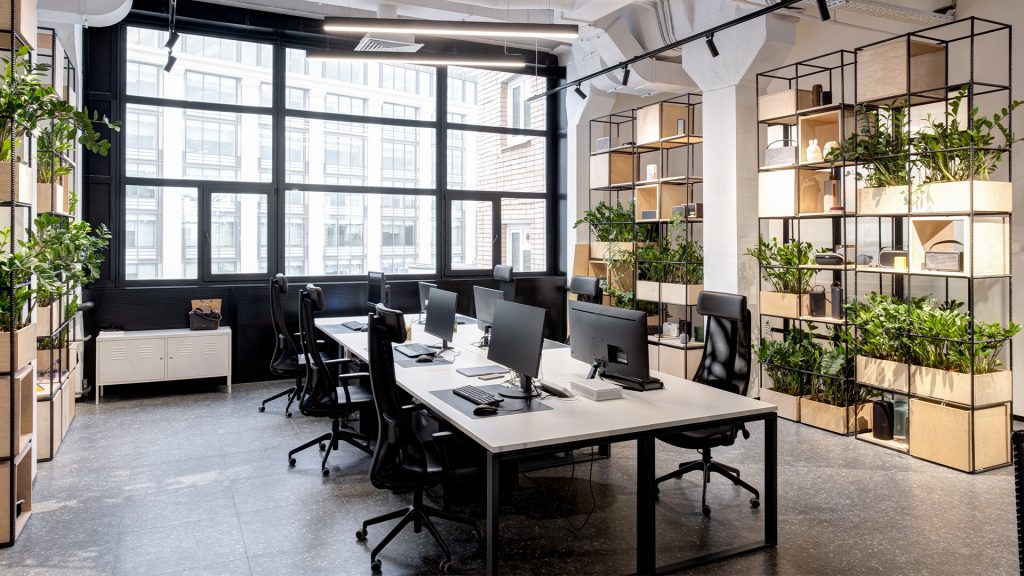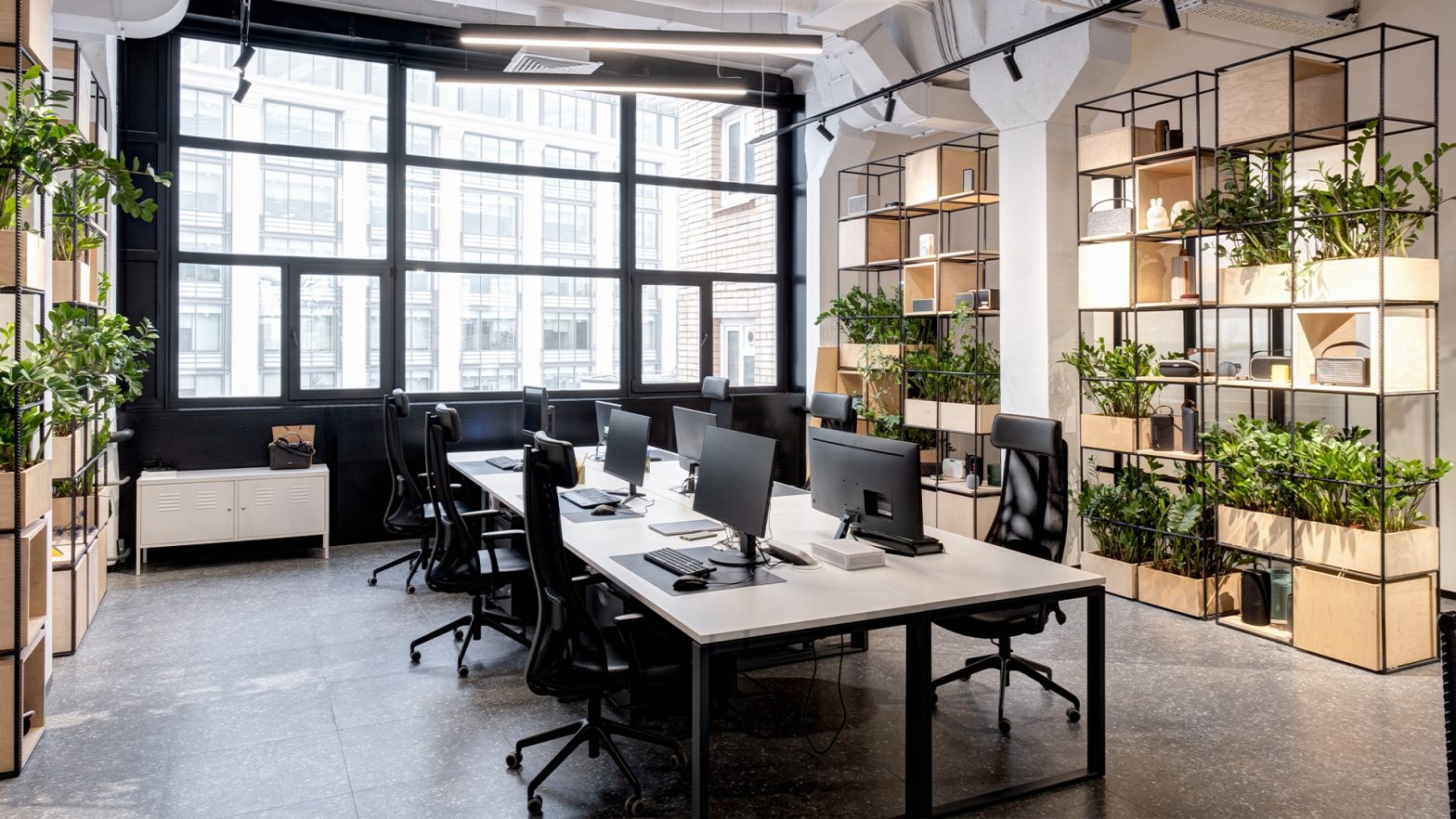
The world is navigating an era where the blend of home’s comfort with work’s necessity has reshaped expectations. The allure of working remotely — with its promise of flexibility and personal space — has led many to rethink office attendance. This transition poses a unique challenge for businesses across Europe — how to lure the workforce back. European office design is undergoing a significant change as a result.
Companies are now crafting office environments that echo the comfort of home, making it more than a workplace. Instead, it is becoming a space where the amenities of home meet the dynamism of professional collaboration. European companies are setting new standards for what an office can and should be through innovative design and thoughtful integration of what employees cherish about working remotely.
1. Neurodiversity and Productivity Support
Approximately 15%-20% of the world’s population is neurodivergent. Europe’s office design changes include companies strongly emphasising supporting neurodiversity and boosting productivity. Organisations are materialising this through office environments that meet the needs of every employee.
European offices recognise that one size does not fit all and are outfitted with soundproof pods, adjustable lighting and library-like spaces. These areas support the need for more privacy so employees have a place where they can go to focus on their work. Quiet-driven zones allow people to seek refuge and concentrate on tasks where everyone knows taking a phone call is frowned upon.
2. Hybrid-Focused Workspaces
Companies are transitioning to hybrid work models, and workspace design is evolving to accommodate in-office and remote work seamlessly. These offices are crafted with flexibility, offering a blend of private and communal areas that adapt to varied tasks. Desks are no longer fixed but modular, allowing employees to move and customise their work settings as needed. Meeting rooms are equipped with state-of-the-art digital tools, ensuring remote participants can engage as fully as those physically present.
Breakout areas offer spaces for concentration and collaboration, reflecting a workforce’s different needs and valuing options to choose how and where they work. Prioritising such flexibility helps companies create environments that support the fluid nature of work. This ensures employees have the resources and spaces to thrive, regardless of location.
3. Technology Integration
European office design embraces technology with an eye toward aesthetic appeal and functionality. The move to wireless connectivity is a standout feature, eliminating the need for cumbersome cables and ports. Effective management systems are in place when cables are necessary, ensuring they create a safe and clutter-free environment for employees.
Moreover, integrating advanced audio systems is transforming meeting and collaboration spaces. High-resolution LED screens and smart whiteboards enable interactive experiences that captivate participants. These tools are all about creating an environment that fosters creativity and engagement.
4. Outdoor Terraces and Biophilic Design
In the quest for more human-centric and nature-inspired work environments, EU companies are now integrating outdoor terraces and biophilic design principles into their office spaces. These “air porches” offer employees a breath of fresh air, literally and figuratively. They provide spaces for relaxation, informal meetings or a simple change of scenery. They also deliver immediate access to the natural world, often featuring greenery, comfortable settings and outdoor workstations.
European offices incorporate biophilic design to include natural light and materials that mimic nature. This philosophy is rooted in the idea that connecting with nature is essential for well-being and productivity. One study revealed that 95% of participants experienced less job-related stress when working in biophilic conditions. Companies can promote relaxation and enhance creativity by incorporating living walls, water features and natural textures.
5. Retreat and Relaxation
The convergence of hospitality elements within traditional office settings is redefining the concept of relaxation at work. With more than 8.2 million people in the U.K. drinking at least two to three cups of tea daily, barista-style reception areas are becoming a central feature. These areas blend a café’s comfort with an office’s functionality. They provide employees with easy access to coffee, tea and other refreshments, elevating daily breaks to an experience of leisure and luxury.
Additionally, bars and dedicated drink areas in European office designs cater to various purposes. These spaces offer a sophisticated backdrop for client meetings and casual gatherings. They equip unique discussion settings, ranging from morning brainstorming sessions with coffee to evening drinks to help employees unwind.
The design of these bars is sleek and modern, often featuring high stools, wine coolers, and stylish storage solutions for glassware and beverages. They also bring a warm, inviting ambience with lighting to make these areas a focal point for social interaction.
6. Elevating the Personal Experience With Home-Like Vibes
European offices are on a quest to create workplaces that resonate more with the look of a living room. Designers are intentionally moving away from the traditional, corporate aesthetic and going for a more residential look and feel. This includes softer seating areas with sofas, armchairs, bistro tables and cosy fireplaces.
The rationale behind this trend is to ease the transition from home to office for employees who have grown accustomed to working remotely. These offices aim to replicate the homey vibe many have come to cherish.
Rethinking European Office Design
European office design is transforming traditional spaces into areas catering to individual needs. The latest office trends are shifting toward environments prioritising well-being, collaboration and comfort as organisations understand the need for today’s hybrid workforce. The link between work and comfort continues to blur as businesses reimagine their spaces, setting new standards for what an office can be.
































